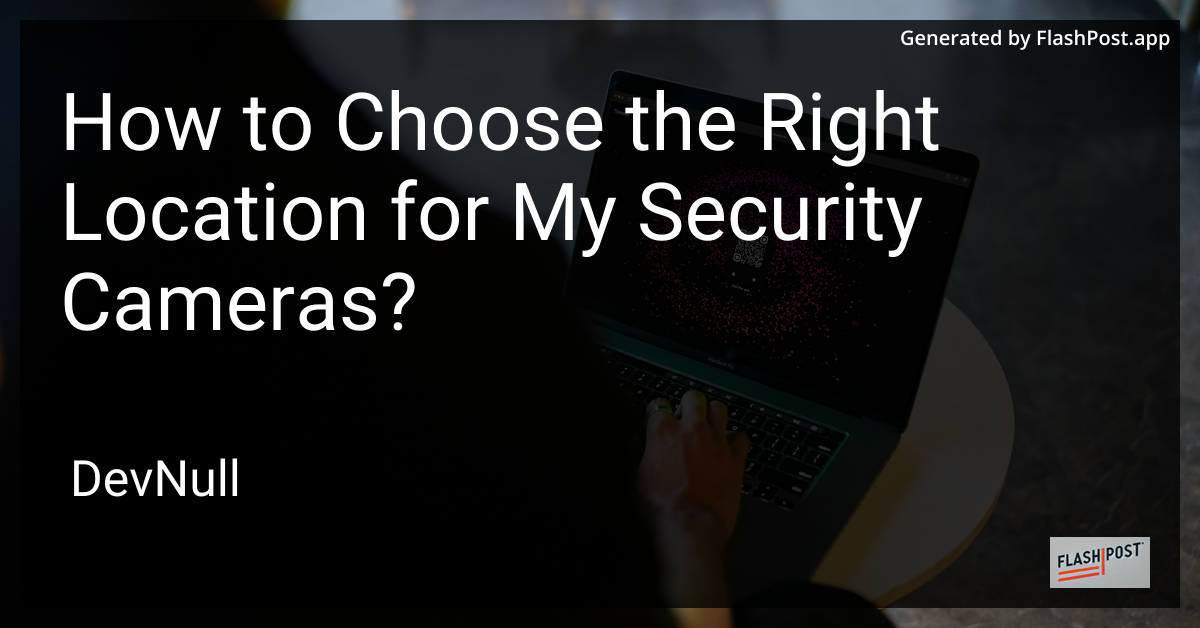

How to Choose the Right Location for My Security Cameras?
In today’s world, security cameras have become an essential part of home and business security systems. Choosing the right location for your security cameras can significantly impact their effectiveness. Proper placement ensures maximum coverage, optimal image quality, and increased deterrence against potential intruders. In this article, we’ll guide you through the steps to choose the best locations for your security cameras.
Assess Your Property’s Vulnerable Points
The first step in determining the best locations for your security cameras is to evaluate your property’s vulnerable points. Consider the following:
- Entry Points: Doors, windows, and garage entrances are primary entry points for intruders.
- Obstructed Areas: Hidden spots, such as large bushes or corners, where someone could hide.
- Valuable Assets: Areas where you store valuable items or important documents.
By identifying these vulnerable points, you can ensure that your cameras cover all critical areas.
Consider Camera Placement Options
Once you’ve identified potential locations, think about your camera placement options. Here are some general guidelines:
- Height: Place cameras at a height of at least 8-10 feet to prevent tampering or vandalism.
- Angles: Ensure cameras are angled slightly downwards for better coverage and visibility.
- Coverage: Overlap your cameras’ fields of view to eliminate blind spots.
For more detailed tips on choosing camera placements, check out this security camera placement guide.
Minimize Obstructions
To ensure clear images, avoid placing cameras behind obstructions. Trim bushes and trees that may block the camera’s view, and avoid installing them behind glass, as glare can degrade image quality.
Account for Light Sources
Proper lighting is crucial for capturing clear footage. Place your cameras where they can benefit from natural light during the day and artificial light at night. However, avoid positioning them directly facing light sources, as this can cause glare and overexposure.
Weather Considerations
Outdoor cameras should be weatherproof and placed in areas where they won’t be directly exposed to harsh weather conditions. Use protective housing or place cameras under eaves or overhangs for added protection.
Adjust for Privacy Concerns
While security is important, be mindful of privacy laws and concerns. Avoid aiming cameras at neighbors’ properties or public areas where privacy expectations are legally protected.
Test Your Setup
Before finalizing your camera placement, thoroughly test your system. Ensure your cameras cover the intended areas, both day and night, and adjust the angles or locations as necessary.
Explore Security Camera Deals
Choosing the right security camera also involves getting value for your money. For the latest offers on top-rated security cameras, explore the best security camera deals.
Conclusion
Selecting the right location for your security cameras is crucial for an effective security system. By carefully assessing vulnerable areas, following best placement practices, and ensuring proper lighting, you can optimize your security setup. Always test your system post-installation and stay informed with the latest deals to enhance your protection without overspending.
